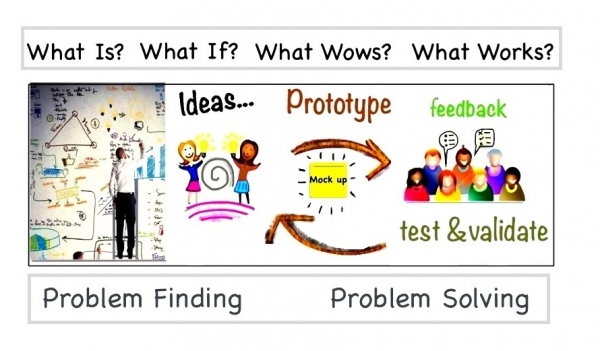


Today, we live in a complex world that is full of constraints and deals with continuously shifting trends. When it comes to solving ill-defined problems we are required to think in new ways all the time.
Design Thinking is the new way of envisioning technology. It is a thoughtful problem solving framework that refers to a set of tools and mindsets to solve human-centric problems.
Design Thinking is all about solving problems under tight constraints. Unlike the traditional analytical approaches of solving problems that greatly rely on past experiences, Design Thinking is about embracing ambiguity with a learning mindset and by understanding the emotional journey of users.
Technology innovation improves our lives in two ways.
First, it provides us cost sides of benefits by eliminating inefficiencies. In this case, the goal of technology is to “hit upon the exact problem” we are trying to solve. However, it is quite common to confuse a problem with its symptoms. Take an example of a mobile app implementation aimed to solve business complexities. The traditional linear framework wouldn’t work here as the problem statement is broad and involves improving the end to end experience of users. The Design Thinking framework utilizes a journey mapping approach to find the exact problem in a shorter time-frame, incorporates iterative prototypes and user feedback to reach the ultimate solution.
Second, technology provides us opportunities to create new business lines by introducing new features in our products or by capitalizing on new market trends. In this case, the goal of the technology is to create something that doesn’t exist yet. The traditional approach of requirement gathering would not work here. Take an example of Big Data implementations. In order to get the true ROI of such project, it’s important to understand the user emotions and future trends that impact this data. The Design Thinking framework allows for envisioning what impacts the emerging behaviors and new market trends.
Empathy, visualization, co-creation and rapid prototyping are key workings of design thinking. It is a style of thinking that combines empathy for the users, imagination in the context of a problem, creativity in the generation of ideas and a rapid experimental approach to assessing the quality of solutions.
Design Thinking is suitable if:
Executives
Business Users
IT Users
Are you getting ready for technology innovation in your organization? Share your questions and experiences in the comment section.
In the next blog series, I will walk you through a step by step process on design thinking using a customer case study.